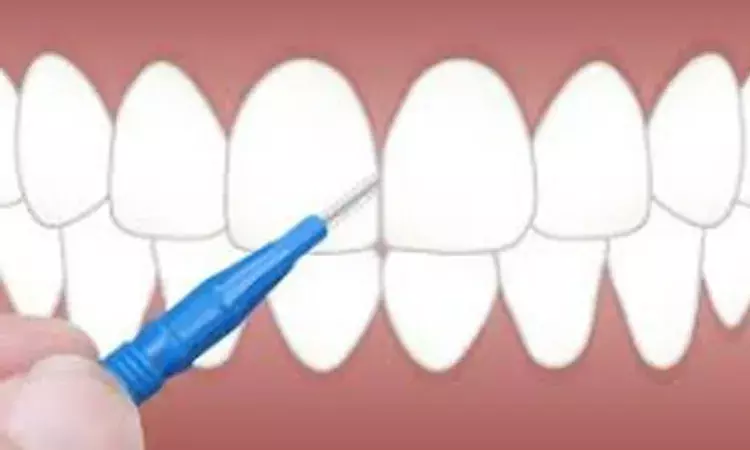- Home
- Medical news & Guidelines
- Anesthesiology
- Cardiology and CTVS
- Critical Care
- Dentistry
- Dermatology
- Diabetes and Endocrinology
- ENT
- Gastroenterology
- Medicine
- Nephrology
- Neurology
- Obstretics-Gynaecology
- Oncology
- Ophthalmology
- Orthopaedics
- Pediatrics-Neonatology
- Psychiatry
- Pulmonology
- Radiology
- Surgery
- Urology
- Laboratory Medicine
- Diet
- Nursing
- Paramedical
- Physiotherapy
- Health news
- Fact Check
- Bone Health Fact Check
- Brain Health Fact Check
- Cancer Related Fact Check
- Child Care Fact Check
- Dental and oral health fact check
- Diabetes and metabolic health fact check
- Diet and Nutrition Fact Check
- Eye and ENT Care Fact Check
- Fitness fact check
- Gut health fact check
- Heart health fact check
- Kidney health fact check
- Medical education fact check
- Men's health fact check
- Respiratory fact check
- Skin and hair care fact check
- Vaccine and Immunization fact check
- Women's health fact check
- AYUSH
- State News
- Andaman and Nicobar Islands
- Andhra Pradesh
- Arunachal Pradesh
- Assam
- Bihar
- Chandigarh
- Chattisgarh
- Dadra and Nagar Haveli
- Daman and Diu
- Delhi
- Goa
- Gujarat
- Haryana
- Himachal Pradesh
- Jammu & Kashmir
- Jharkhand
- Karnataka
- Kerala
- Ladakh
- Lakshadweep
- Madhya Pradesh
- Maharashtra
- Manipur
- Meghalaya
- Mizoram
- Nagaland
- Odisha
- Puducherry
- Punjab
- Rajasthan
- Sikkim
- Tamil Nadu
- Telangana
- Tripura
- Uttar Pradesh
- Uttrakhand
- West Bengal
- Medical Education
- Industry
Arginine-fluoride varnish helps modulate biochemical composition of biofilm on treated enamel: Study

According to recent research, it has been found out that higher concentrations (i.e. 2%/4%) of Arg in 5% NaF varnish have the potential to modulate the biochemical composition of the biofilm growing on the treated enamel.
The study is published in the Journal of Dentistry.
Mohammed Nadeem Bijle and colleagues from the Paediatric Dentistry, Faculty of Dentistry, The University of Hong Kong, Hong Kong conducted the present study to examine the biochemical components of multi-species biofilm on the arginine (Arg)-sodium fluoride (NaF) varnish-treated enamel following bacterial pH-cycling.
l-arginine (at 1%, 2%, & 4% w/v.) was incorporated in a 5% NaF varnish. The experimental and control groups were: 1%, 2%, 4% Arg-NaF, NaF, and no treatment. Enamel blocks were prepared, acid-etched, varnish-treated and then subjected to 72 h bacterial pH-cycling in an oral biofilm reactor.
The organic (carbohydrates, proteins, amyloids, and eDNA) and inorganic components (calcium, inorganic phosphate, F) were assayed for the obtained biofilm suspensions. The biofilms were stained for exopolysaccharides (EPS)/bacteria and the respective proportions of live/dead bacteria was determined using confocal imaging.
The following results were seen-
a. The total carbohydrate content of the biofilm was the lowest for the 2% and 4% Arg-NaF (p < 0.05).
b. Except for 2% Arg-NaF, the biofilm proteins for 4% Arg-NaF were significantly higher than the other groups (p < 0.05).
c. The amyloids for Arg-NaF groups were significantly lower than the controls (p < 0.05).
d. The eDNA for 4% Arg-NaF was significantly higher than the controls (p < 0.05). e. The 2% and 4% Arg-NaF-treated enamel had increased biofilm Pi and F compared to the NaF-treated enamel (p < 0.05).
f. The proportion of biofilm EPS matrix to bacteria was significantly reduced in Arg-NaF groups compared to the controls (p < 0.05).
g. The dead bacterial proportions of 4% Arg-NaF were significantly higher than the controls (p < 0.05).
Hence, the authors concluded that "Higher concentrations (i.e. 2%/4%) of Arg in 5% NaF varnish have the potential to modulate the biochemical composition of the biofilm growing on the treated enamel."
Dr. Nandita Mohan is a practicing pediatric dentist with more than 5 years of clinical work experience. Along with this, she is equally interested in keeping herself up to date about the latest developments in the field of medicine and dentistry which is the driving force for her to be in association with Medical Dialogues. She also has her name attached with many publications; both national and international. She has pursued her BDS from Rajiv Gandhi University of Health Sciences, Bangalore and later went to enter her dream specialty (MDS) in the Department of Pedodontics and Preventive Dentistry from Pt. B.D. Sharma University of Health Sciences. Through all the years of experience, her core interest in learning something new has never stopped. She can be contacted at editorial@medicaldialogues.in. Contact no. 011-43720751
Dr Kamal Kant Kohli-MBBS, DTCD- a chest specialist with more than 30 years of practice and a flair for writing clinical articles, Dr Kamal Kant Kohli joined Medical Dialogues as a Chief Editor of Medical News. Besides writing articles, as an editor, he proofreads and verifies all the medical content published on Medical Dialogues including those coming from journals, studies,medical conferences,guidelines etc. Email: drkohli@medicaldialogues.in. Contact no. 011-43720751


